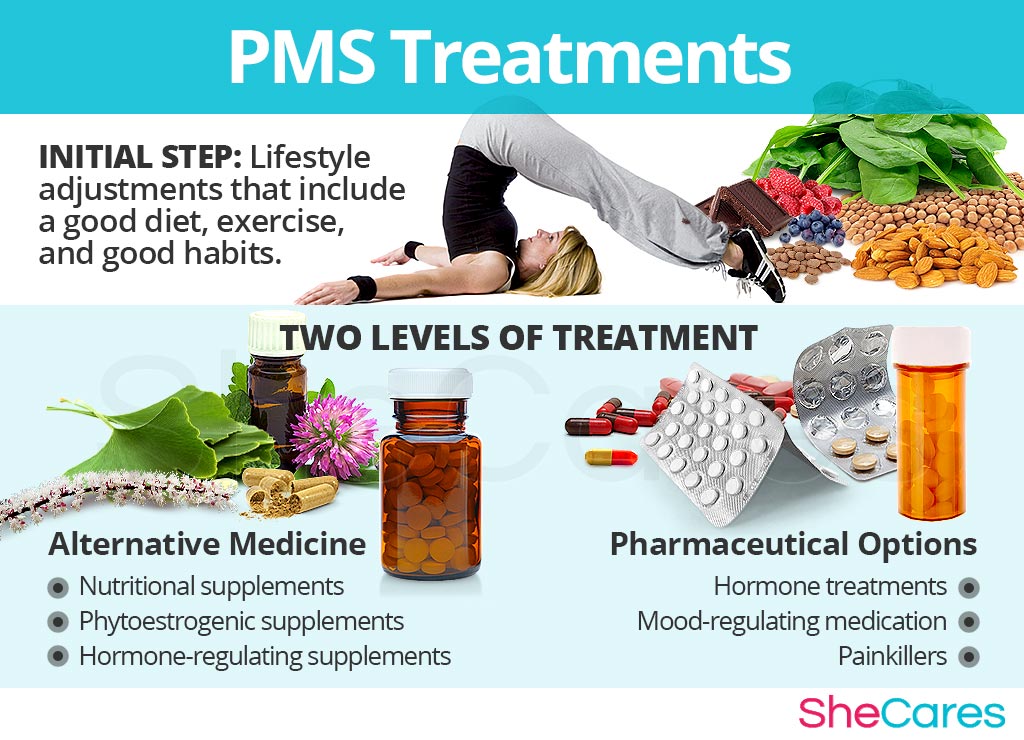Premenstrual syndrome (PMS)
Premenstrual syndrome
Premenstrual
syndrome (PMS) has a
wide variety of signs and symptoms. It is the occurrence of cyclical somatic,
psychological and emotional symptoms that occur in the luteal (premenstrual)
phase of the menstrual cycle and resolve by the time menstruation ceases.
Premenstrual symptoms occur in almost all women of reproductive age.
In 3–60% symptoms are severe, causing
disruption to everyday life, in particular interpersonal relationships.
Aetiology and Causes of premenstrual syndrome
The precise
aetiology of PMS is unknown, but cyclical ovarian activity and the effects of
oestradiol and progesterone on certain neurotransmitters, including fluctuations
of serotonin that could trigger PMS symptoms. Insufficient amounts of serotonin
may contribute to premenstrual depression, as well as to fatigue, food cravings
and sleep problems.
PMS timing
PMS symptoms can begin any
time after ovulation (though they typically begin in the week before your
period) and last until 5. Or so days after menstruation begins.
Diagnostic criteria of premenstrual
syndrome
The patient
is likely to complain of some or all of the following:
1. Bloating
2. Cyclical weight gain
3. Mastalgia
4. Abdominal cramps
5. Fatigue, headache
6. Depression
7. Irritability.
Treatment of premenstrual syndrome
• Simple therapies:
Include stress reduction, alcohol and caffeine
limitation and exercise.
• Medical
treatments:
1.
COCP:
the most effective regime appears
to be bicycling or tricycling pill packets (i.e. taking two or three packets in
a row without a scheduled break)
2.
Transdermal oestrogen:
This has been shown to
significantly reduce PMS symptoms, by overcoming the fluctuations of the normal
cycle.
3.
GnRH analogues:
These are a very effective treatment for PMS as they turn off ovarian
activity.
4.
Selective serotonin-reuptake
inhibitors (SSRIs):
This group of drugs significantly improves PMS.
• Hysterectomy with bilateral
salpingo-oopherectomy:
This
procedure obviously completely removes the ovarian cycle. It should only be
performed if all other treatments have failed. It is essential for such patients
to have a preoperative trial of GnRH analogue as a ‘test’ to ensure that switching
off ovarian function (by removing the ovaries at hysterectomy) will indeed cure
the problem.
• Vitamins:
Initial studies suggest that magnesium,
calcium and isoflavones and vitamin B6 may be useful in treating PMS.
• Alternative therapies:
Initial results of St John’s Wort are
promising, particularly in improving mood. Although Evening Primrose oil is
commonly used, there is no evidence to support this treatment for PMS.
• Cognitive-behavioural therapy (CBT):
CBT appears
to be particularly effective when combined with SSRIs.
Lifestyle and home remedies for PMS
1. Eat smaller, more-frequent meals to reduce bloating
and the sensation of fullness.
2. Limit salt and salty foods to reduce bloating and
fluid retention.
3. Choose foods high in complex carbohydrates, such as
fruits, vegetables and whole grains.
4. Choose foods rich in calcium.

Comments
Post a Comment